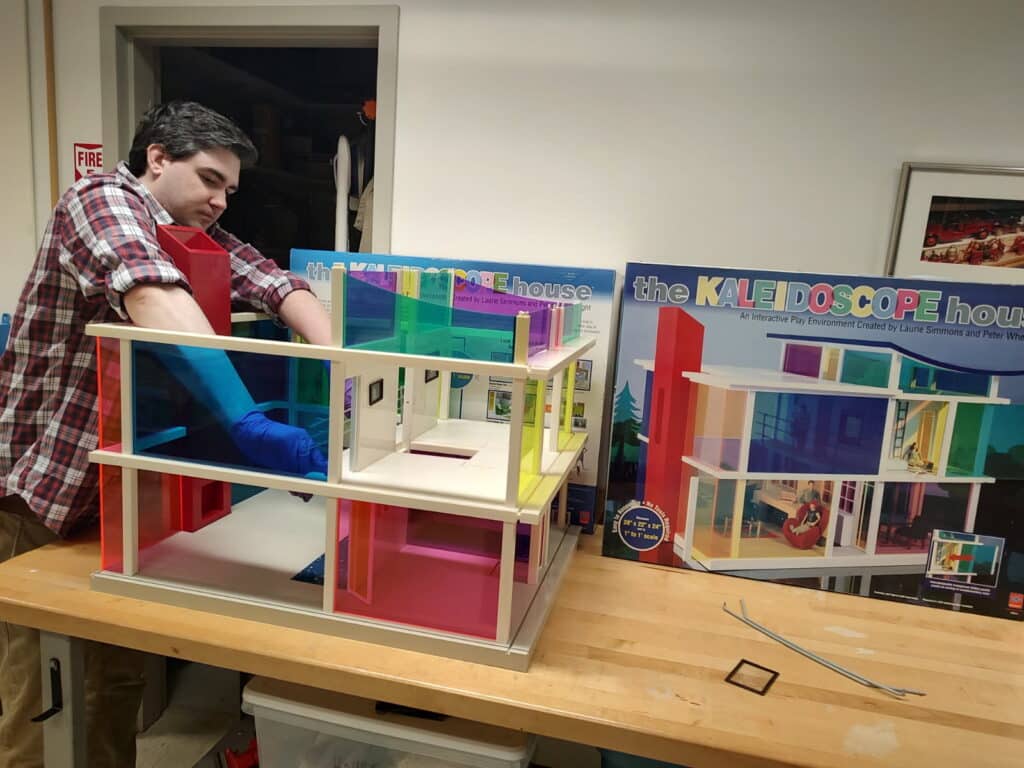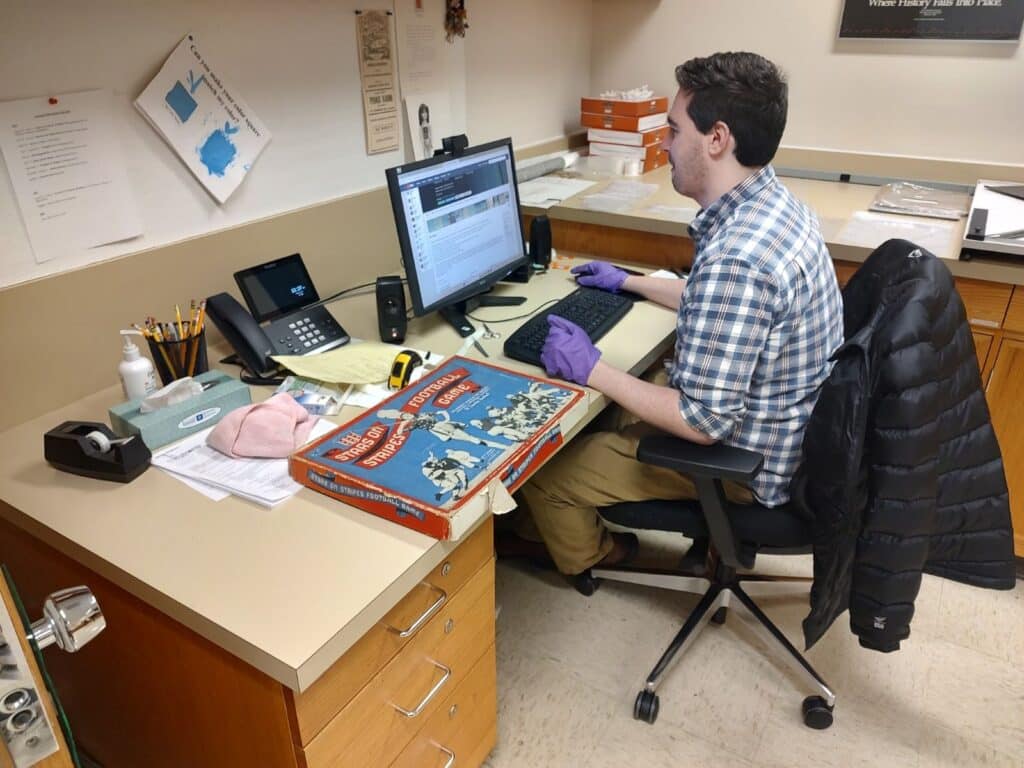How do you use objects to capture and preserve a concept as abstract as play? For although play stands as a universal phenomenon, it is also a deeply subjective experience, which can look and feel completely different depending on the time, place and people engaging in it. How can anyone, much less an entire museum, adequately convey such a personal and imaginative experience through artifacts in a way that does play justice? In my time as an intern with The Strong National Museum of Play’s Collections and Conservation team, this question has always been at the forefront of my mind and, when it comes to bringing the world’s largest collection of toys, dolls, games, and play items to life, teamwork and thinking outside the box truly go a long way.

Teamwork itself is always very useful no matter what you’re trying to accomplish, be it at work, school, home or in a particular hobby. Having the help and insights of others can make an immense positive difference in achieving one’s goals. What, then, does teamwork look like at The Strong, when staff are working to convey a sense of “playfulness” in collections items? For one thing, no single individual, team or department ever works alone when developing an exhibition or preparing an item for display. While museums may sometimes appear to be quiet, static, and sedentary places, the reality behind the scenes is far more engaging and dynamic. Just as a wind-up toy needs many different gears and mechanisms to waddle around, so too do museums need many different professionals and perspectives to best preserve the personality of their collection items. This is especially true at The Strong, whose collection consists not merely of toys, games, and dolls, but also the myriad memories of countless people who have enjoyed playing with them in the past. Infusing these items with the life given to them by previous owners, as well as the vitality provided by present-day guests, is an all-hands on deck assignment: curators, conservators, exhibit designers, graphic designers, fabricators, and more all have an indispensable role to play in making displayed artifacts “playful” again, and every aspect of a given exhibit reflects this collaborative process.

The careful preservation and safe storage of an on-display Barbie doll, for instance, is dependent on the diligent work of the collections manager and the museum conservator, who themselves work hand in hand with curators in selecting the doll for exhibition, staging her display case for view, and thoughtfully writing her label text for visitors to read. The display case itself, having had its dimensions established by the exhibit designer and the collections team, is constructed by museum fabricators. Those skillful craftspeople then go on to build from scratch the entire surrounding exhibition environment: the Barbie dolls mount, interactive signs and stands, extra-big video game screens and controllers. These creations themselves are further dependent on the imaginative preparation of exhibition designers, who collaborate with all of the aforementioned team members, along with museum graphic designers, to forge from nothing a gallery space worthy of a playthings cherished memories. The pathways, lighting, sounds, colors, and sensations of the entire space are visualized and carefully planned in unison with a wide range of museum professionals to create a truly unique and intimately engaging experience, within which even the oldest items take on a life of their own once more.

Even when considering all this inter-team collaboration, however, the collection items of The Strong still require a bit more creativity to truly shine as intended, and in achieving this extra bit of authenticity, one must always think outside the box. Indeed, when attempting to capture, preserve, and celebrate a playful object’s life, play itself as both a personal and universal experience must always take center stage. For some objects in the collection, this means actually being played with, despite still being museum artifacts. The classic games of Infinity Arcade and the intricate machines of Pinball Playfields are all examples of collections items which have taken on a new, active life at play within the museum. For the items which can’t be as seamlessly or safely interacted with by our guests, one must get creative. In my experience, even the smallest of details can help infuse a game, doll, or toy with an entirely unique sense of playful vitality. Sometimes, that means something as simple as leaving a promotional tag or sticker on the box of a video game; those who remember purchasing or interacting with their own copies can be taken back in time by those minor details and rediscover that exhilarating sense of excitement only a new game release can inspire. Other times, it means leaving the scribbled name of a previous owner on a displayed action figure. Although new generations may not have had their own versions of this figure to connect with, being able to witness firsthand the wear and tear of a much beloved toy imparts a fundamentally humanizing sensation to visitors, elevating this item beyond that of some stuffy and inaccessible museum artifact, and into one which relates directly to the sentiments and experiences of one’s own life. In each of these ways, the collection items of The Strong do not merely survive but thrive in a dynamic new setting for all—museum staff and guests alike—to enjoy.
By: Mark Walsh, 2025 Strong Intern


